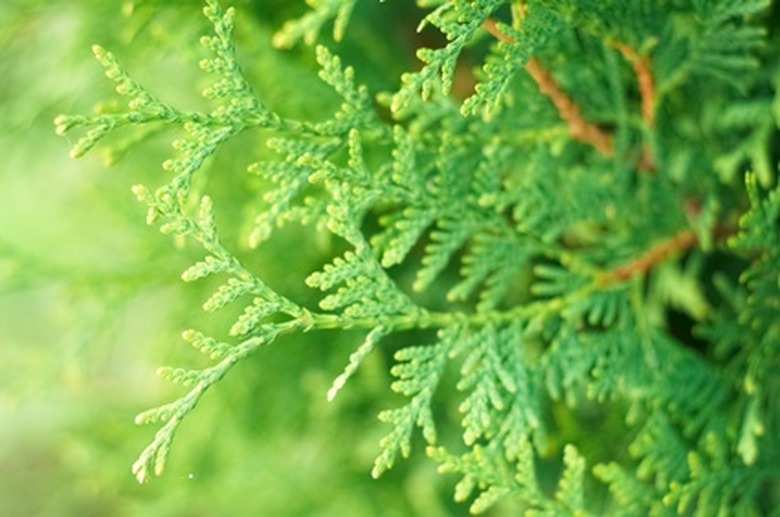How To Transplant Wild Juniper Trees
Things Needed
- Bucket
- Shovel
- Mulch
Juniper trees are evergreens with a long taproot. To successfully transplant wild juniper trees, you must keep this taproot intact. The small trees also send out horizontal roots, but it is not fatal for the tree if these are cut during the transplant process. Junipers require full light and a well-drained soil. Once planted in a new location, the trees require very little maintenance or nutritional supplements. Water is the one basic requirement to keep the young tree healthy and growing to full maturity. Trees less than 18 inches tall are the best prospects for wild transplanting during late fall and early winter.
- Juniper trees are evergreens with a long taproot.
- Once planted in a new location, the trees require very little maintenance or nutritional supplements.
Step 1
Water the young seedling 24 hours prior to removing it from its native location. Moisture-softened soil is more manageable to remove and causes less stress on the small seedling.
Step 2
Dig a root ball around the wild juniper 12 to 18 inches in diameter. The depth of the root ball must be equal to two thirds the tree's height. If the tree is 18 inches tall, the root ball must extend at least 12 inches deep.
Step 3
Pull the wild juniper's root ball from the native location. Keep as much of the native soil intact and in contact with the seedling's roots. Place the seedling in a bucket. Transport as soon as possible to the new location.
- Water the young seedling 24 hours prior to removing it from its native location.
Step 4
Dig a transplant hole two to three times the diameter of the tree's root ball, and 1 to 2 inches deeper.
Step 5
Set the wild juniper into the new transplant hole. Align the top of the original soil line with the native location. Fill in soil around the root ball until the hole is two-thirds full. Tamp the loose soil down with your hands.
Step 6
Add water to fill the hole. This settles the native soil around the roots. Finish filling the hole with native soil after the water has drained. Add more water to remove air from around the roots and improve soil contact.
- Dig a transplant hole two to three times the diameter of the tree's root ball, and 1 to 2 inches deeper.
- This settles the native soil around the roots.
Step 7
Apply 2 to 3 inches of mulch around the new transplant. Extend the mulch outward to below the upper tree limb drip line. The mulch will retain moisture and retard competitive weed growth. Keep the transplant moist.
Tip
Ask permission from private landowners when transplanting trees from somewhere other than your own property.
Warning
Contact your local Depart of Natural Resources as taking wild trees from any public lands may be illegal.
